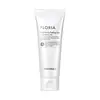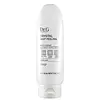What's inside
What's inside
 Key Ingredients
Key Ingredients

 Benefits
Benefits

 Concerns
Concerns

 Ingredients Side-by-side
Ingredients Side-by-side

Water
Skin ConditioningGlycerin
HumectantQuaternium-60
Propylene Glycol
HumectantCarbomer
Emulsion StabilisingDipropylene Glycol
HumectantParfum
MaskingPhenoxyethanol
PreservativeSaccharomyces/Nelumbo Nucifera Ferment Extract Filtrate
AntioxidantDisodium EDTA
Butylene Glycol
HumectantAscorbic Acid
AntioxidantPearl Powder
Caprylyl Glycol
Emollient1,2-Hexanediol
Skin ConditioningPentylene Glycol
Skin ConditioningNelumbo Nucifera Flower Extract
Skin ConditioningLactic Acid
BufferingSerine
MaskingSodium Lactate
BufferingSorbitol
HumectantUrea
BufferingPrunus Mume Fruit Extract
HumectantSodium Chloride
MaskingAllantoin
Skin ConditioningCitric Acid
BufferingWater, Glycerin, Quaternium-60, Propylene Glycol, Carbomer, Dipropylene Glycol, Parfum, Phenoxyethanol, Saccharomyces/Nelumbo Nucifera Ferment Extract Filtrate, Disodium EDTA, Butylene Glycol, Ascorbic Acid, Pearl Powder, Caprylyl Glycol, 1,2-Hexanediol, Pentylene Glycol, Nelumbo Nucifera Flower Extract, Lactic Acid, Serine, Sodium Lactate, Sorbitol, Urea, Prunus Mume Fruit Extract, Sodium Chloride, Allantoin, Citric Acid
Water
Skin ConditioningEuterpe Oleracea Fruit Extract
Butylene Glycol
HumectantPolyethylene
AbrasiveAlumina
AbrasiveTitanium Dioxide
Cosmetic ColorantPentylene Glycol
Skin ConditioningUlmus Davidiana Root Extract
Skin ConditioningAmaranthus Caudatus Seed Extract
Skin ConditioningCentella Asiatica Extract
CleansingFicus Carica Fruit Extract
HumectantCitrus Limon Fruit Extract
MaskingAnthemis Nobilis Flower Extract
MaskingFish Extract
Prunus Serrulata Flower Extract
Skin ConditioningAloe Barbadensis Leaf Juice
Skin ConditioningHydrogenated Lecithin
EmulsifyingMagnesium Aluminum Silicate
AbsorbentStyrene/Acrylates Copolymer
Urea
BufferingCaffeine
Skin ConditioningCarbomer
Emulsion StabilisingTriethanolamine
BufferingXanthan Gum
EmulsifyingDipotassium Glycyrrhizate
HumectantSodium Chloride
MaskingAllantoin
Skin ConditioningHydrolyzed Collagen
EmollientGlyceryl Polymethacrylate
Disodium EDTA
Ethylhexylglycerin
Skin ConditioningOnsen-Sui
Rice Ferment Filtrate
Skin ConditioningCeramide NP
Skin ConditioningPhenoxyethanol
PreservativeWater, Euterpe Oleracea Fruit Extract, Butylene Glycol, Polyethylene, Alumina, Titanium Dioxide, Pentylene Glycol, Ulmus Davidiana Root Extract, Amaranthus Caudatus Seed Extract, Centella Asiatica Extract, Ficus Carica Fruit Extract, Citrus Limon Fruit Extract, Anthemis Nobilis Flower Extract, Fish Extract, Prunus Serrulata Flower Extract, Aloe Barbadensis Leaf Juice, Hydrogenated Lecithin, Magnesium Aluminum Silicate, Styrene/Acrylates Copolymer, Urea, Caffeine, Carbomer, Triethanolamine, Xanthan Gum, Dipotassium Glycyrrhizate, Sodium Chloride, Allantoin, Hydrolyzed Collagen, Glyceryl Polymethacrylate, Disodium EDTA, Ethylhexylglycerin, Onsen-Sui, Rice Ferment Filtrate, Ceramide NP, Phenoxyethanol
Ingredients Explained
These ingredients are found in both products.
Ingredients higher up in an ingredient list are typically present in a larger amount.
Allantoin is a soothing ingredient known for its protective and moisturizingg properties. Because of this, it is often added to products with strong active ingredients.
Studies show higher concentrations of this ingredient can promote wound healing.
Though it can be derived from the comfrey plant, allantoin is produced synthetically for cosmetic products to ensure purity.
Learn more about AllantoinButylene Glycol (or BG) is used within cosmetic products for a few different reasons:
Overall, Butylene Glycol is a safe and well-rounded ingredient that works well with other ingredients.
Though this ingredient works well with most skin types, some people with sensitive skin may experience a reaction such as allergic rashes, closed comedones, or itchiness.
Learn more about Butylene GlycolCarbomer is a polymer of acrylic acid. Its main role is to create a gel consistency.
A high amount of carbomer can cause pilling or balling up of products. Don't worry, most products contain 1% or less of carbomer.
Disodium EDTA plays a role in making products more stable by aiding other preservatives.
It is a chelating agent, meaning it neutralizes metal ions that may be found in a product.
Disodium EDTA is a salt of edetic acid and is found to be safe in cosmetic ingredients.
Learn more about Disodium EDTAPentylene glycol is typically used within a product to thicken it. It also adds a smooth, soft, and moisturizing feel to the product. It is naturally found in plants such as sugar beets.
The hydrophilic trait of Pentylene Glycol makes it a humectant. As a humectant, Pentylene Glycol helps draw moisture from the air to your skin. This can help keep your skin hydrated.
This property also makes Pentylene Glycol a great texture enhancer. It can also help thicken or stabilize a product.
Pentylene Glycol also acts as a mild preservative and helps to keep a product microbe-free.
Some people may experience mild eye and skin irritation from Pentylene Glycol. We always recommend speaking with a professional about using this ingredient in your routine.
Pentylene Glycol has a low molecular weight and is part of the 1,2-glycol family.
Learn more about Pentylene GlycolPhenoxyethanol is a preservative that has germicide, antimicrobial, and aromatic properties. Studies show that phenoxyethanol can prevent microbial growth. By itself, it has a scent that is similar to that of a rose.
It's often used in formulations along with Caprylyl Glycol to preserve the shelf life of products.
Chances are, you eat sodium chloride every day. Sodium Chloride is also known as table salt.
This ingredient has many purposes in skincare: thickener, emulsifier, and exfoliator.
You'll most likely find this ingredient in cleansers where it is used to create a gel-like texture. As an emulsifier, it also prevents ingredients from separating.
There is much debate on whether this ingredient is comedogenic. The short answer - comedogenic ratings don't tell the whole story. Learn more about comegodenic ratings here.
The concensus about this ingredient causing acne seems to be divided. Research is needed to understand if this ingredient does cause acne.
Scrubs may use salt as the primary exfoliating ingredient.
Learn more about Sodium ChlorideUrea is also called carbamide and is the diamide of carbonic acid. In cosmetics, urea is used to hydrate the skin. It also provides exfoliation in higher concentrations.
As a humectant, urea helps draw moisture from the air and from deep within the skin. This helps hydrate your skin. Studies show urea is an effective moisturizer for dry skin conditions. 40% urea is typical in medications for treating eczema and other skin conditions.
Urea has the strongest exfoliation effect in concentrations higher than 10%. It is a keratolytic agent, meaning it breaks down the keratin protein in the top layer of skin. This helps remove dead skin cells and flaking skin.
In medicine, urea has been shown to help increase the potency of other ingredients, such as fungal treatments.
Humans and animals use urea to metabolize nitrogen-containing compounds. Urea is highly soluble in water. Once dissolved, it is neither acidic nor alkaline.
Learn more about UreaWater. It's the most common cosmetic ingredient of all. You'll usually see it at the top of ingredient lists, meaning that it makes up the largest part of the product.
So why is it so popular? Water most often acts as a solvent - this means that it helps dissolve other ingredients into the formulation.
You'll also recognize water as that liquid we all need to stay alive. If you see this, drink a glass of water. Stay hydrated!
Learn more about Water